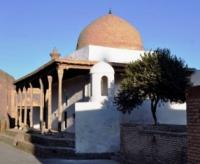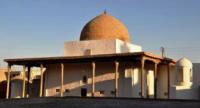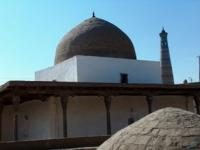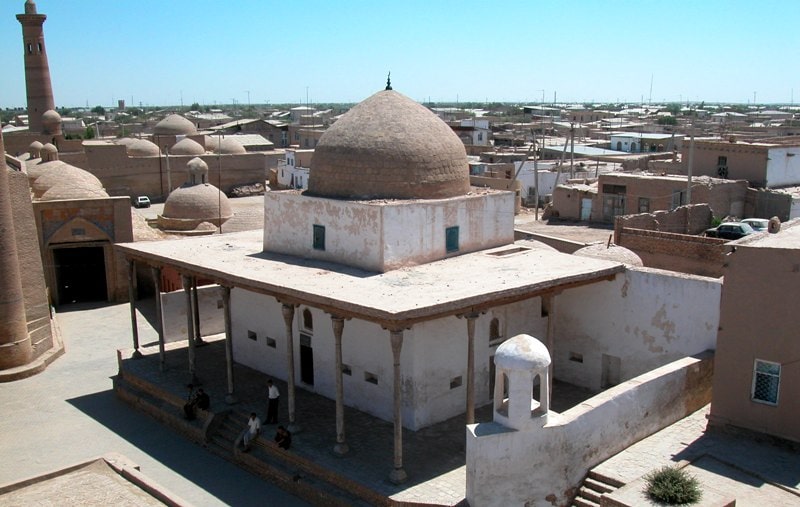Вы здесь
Ak-Mosque in Khiva.



Excursions on mosques of Khiva.
“The area is on both sides of the Jaihun River. This is a magnificent vast area with numerous cities, completely cultivated ... there are no dwellings and gardens, there are a lot of grapes, crops and trees, fruits and various goods for trading people. Residents are quick-witted, distinguished by scholarship, know fiqh, talented and educated. ”
Al-Muqadd, asn. X century.
Visit to Khiva and Central Asia.
It is difficult to quickly identify residential quarter mosques among the other buildings of Khiva. Because most of the mosques are built exactly like residential buildings, among them the Ak-Machit (A White Mosque) differs by the peculiarity of its layout.
Frontal view of the mosque, a shady terassa surrounding it from three sides, three doors of the one-dome building suggests that the mosque is a gathering place for the community. Its oldest parts (foundations) were built at the same time with Anushakhan's baths.
But the inscriptions carved on the doors indicate that the building was erected in 1838 - 1842. It was exactly by this time that all the buildings around the square were generally finished by constructors and now master architects had to build the building on the remaining small part of the square.
The architecture of this building had to express the grandeur of the square, not much differing from the adjacent residential buildings and Khivan masters completed this task at the high level.
The mosque consists of the square room (6,35 x 6,35) on which the central dome, is set up and also of a terrace. The room was broadened by means of arches. The structure of the terrace and the side walls clearly denote composition of the facade of the mosque.
Dome of the mosque which is highly raised over a flat roof, with its square base from afar gives the building a stepped appearance. Convenient location of the mosque allowed arranging the mihrab (altar) in the southern wall.
And this in turn made it possible to perform namaz (prayer) at the same time both in the mosque and in terrace. And this in turn made it possible to perform namaz (prayer) at the same time both in the mosque and in terrace.
Masters during the construction of the mosque and its decorative design sought to use simple methods of construction and to limit its decoration by simple patterns. On the wooden columns almost never occur carvings, only the upper part of the column is executed in the style lay out hotamkori-pilak (a type of laid on patterns of small wooden bars).
Masters of the art of woodcarving Nurmuhammed son of Odin Qalandar and Qalandar son Seyidmuhammed demonstrated their skills on patterned ornaments of the three doors.
Floral patterns and openwork carving of the doors performed in the same style. On the wall behind the door that faces the north side barely visible are the patterns similar to the various inscriptions.
In 1956 - 1960 in the mosque conservation and reinforcement works were performed.

Enlightener:
http://welcomeuzbekistan.uz
Photos
Alexander Petrov.







